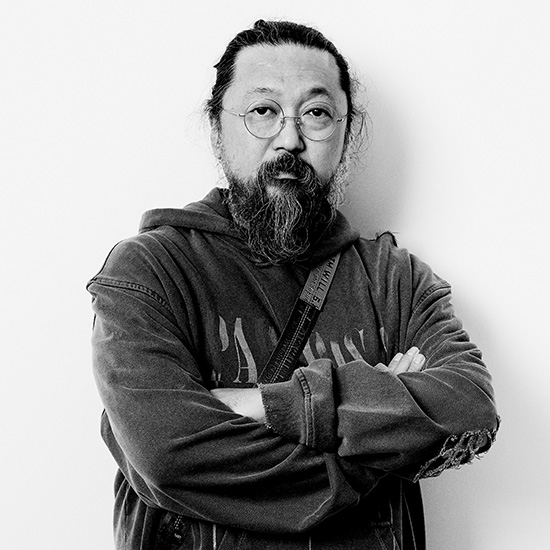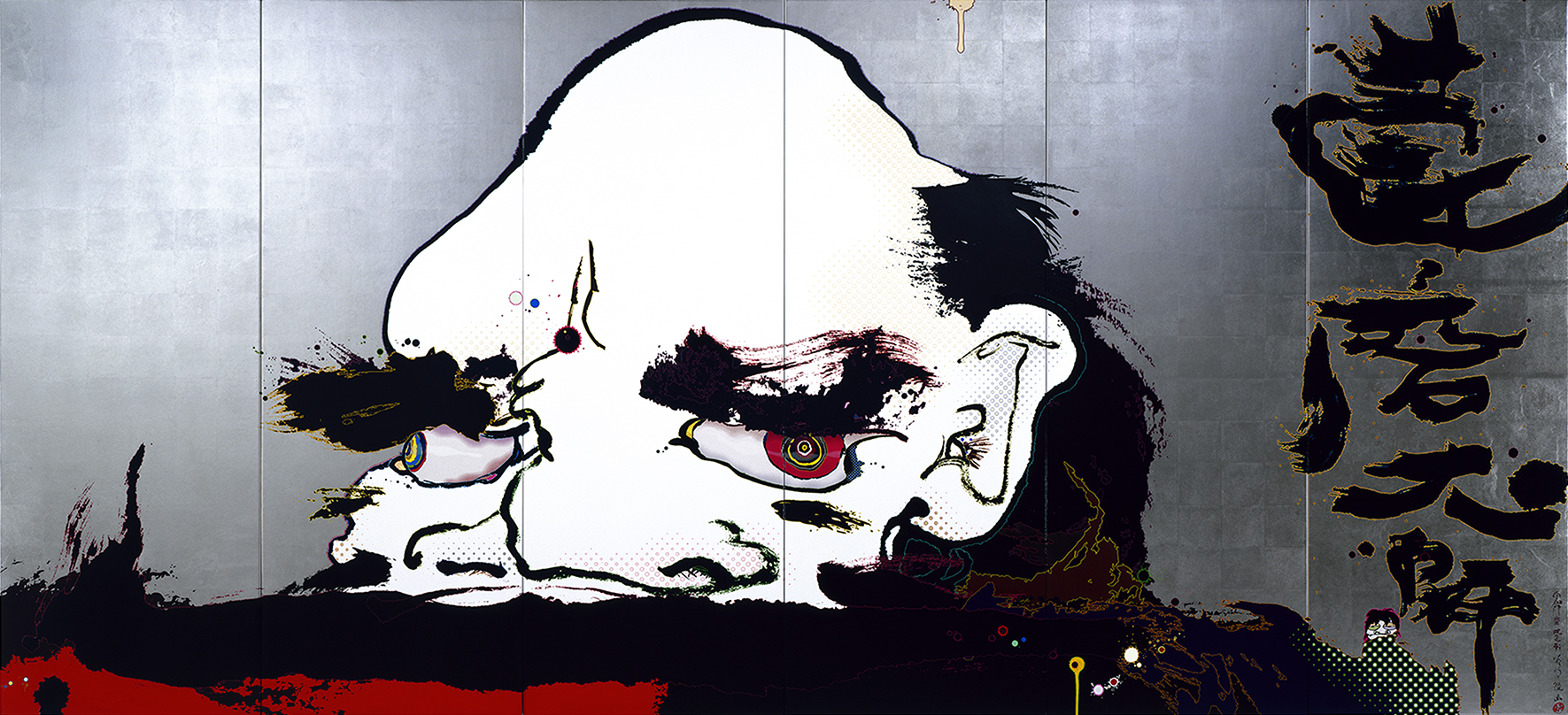Takashi Murakami
Born 1962 in Tokyo, Japan
Lives in Tokyo
Daruma the Great is a stunning and monumental example of Takashi Murakami’s portraits representing the 6th Century monk Bodhidharma, known as Daruma, the Indian sage founder of Zen Buddhism. The present work encapsulates Murakami’s signature style of filtering Japanese traditional subjects with his trademark contemporary aesthetics. The legend about Daruma – who is a very popular figure in modern Japan – says that after meditating for nine years facing the same wall, the monk briefly fell asleep, and in order not to make it happen again he cut off his eyelids and went back to staring at the wall for two more years without ever blinking. In the present unconventional representation where the monk’s head is hyperbolically enlarged and flattened, Murakami also echoes the style and technique of the 18th Century eccentric Japanese painter Soga Shôhaku, whose two aliases – Kishinsai, Dasokuken – are marked above the artist’s name in the right side of the work. Murakami masterfully bridges the gulf between the new representational aesthetics and the greater pre-modern classical tradition indigenous to Japan. In the words of the artist: “My aim is to bring about a creative process which will build a bridge between the past and the future”.
(the artist cited in: Laurent le Bon, “Looking forward to the past” in: Exhibition Catalogue, Versailles, Château de Versailles, Murakami Versailles, 2011, p. 168)
Daruma the Great represents a pinnacle of Murakami’s career that summates the developments of his style and subject matter. In the 1980s Murakami studied at the Tokyo National University for a doctorate in “nihon-ga”, the hyper-stylized branch of Japanese art that emerged in around 1890 and was intended to restore traditional Japanese painting while promoting the idea of a pan-Asian cultural continuity. Inevitably, vestiges of this training have lingered on to colour aspects of his later working practice, from his impeccably perfectionist method to the inclusion of particular motifs. Indeed, one of the most evident traces of influence is his recurrent motif of eyes together with the crowds of smiling flower-faces. Murakami’s original aesthetic relates to the pre-eminent anime and manga visual cultures of 1980s Japan, but developed to deal in otaku, which describes a computer-based, virtual lifestyle that becomes a substitute for reality. However, from the mid 1990s, Murakami moved away from the more confrontational, aggressive and sexual atmosphere of otaku and started to embrace the cute cartoon style of kawaii as a more subtle medium for his contemporary socio-cultural scrutiny. Emblematic of this change in direction was the name change of his studio in 2001 from the ‘Hiropon Factory’ to ‘Kaikai Kiki’. Murakami has declared, “Japanese don’t like serious art. But if I can transform cute characters into serious art, they will love my piece”
Arthur Lubow, “The Murakami Method”, in: The New York Times, 2005

Photo credit: Guillaume Ziccarelli
Daruma The Great, 2007
acrylic and platinum leaf on canvas mounted on board
160 x 351 cm (6 panels, each 160 x 58,4cm)
Unique
© 2007 Takashi Murakami /Kaikai Kiki Co., Ltd. All Rights Reserved
Courtesy Perrotin
